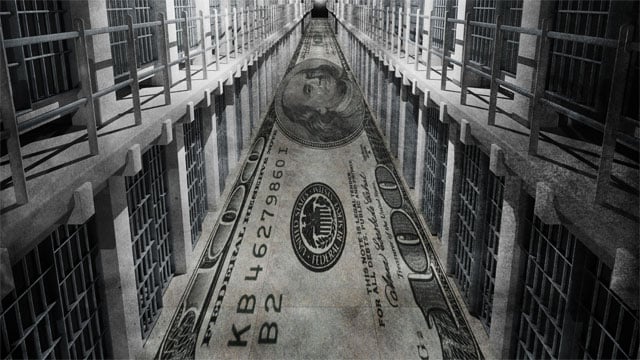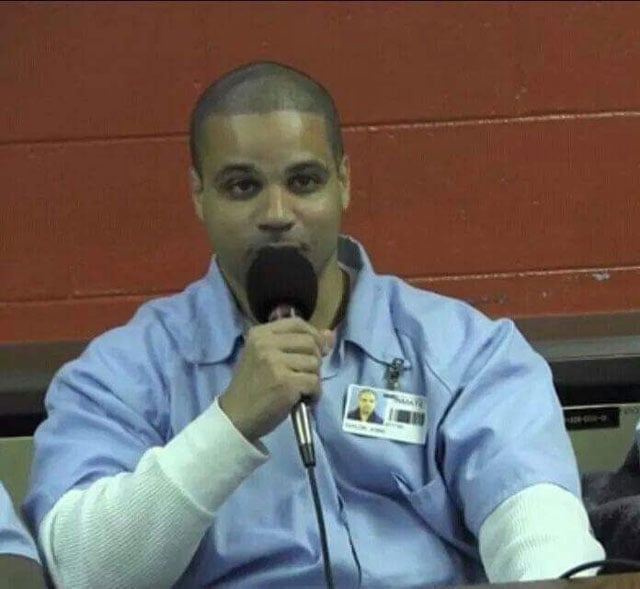
Support justice-driven, accurate and transparent news — make a quick donation to Truthout today!
This past January, prisoners in Florida went on strike to protest what they called modern-day slavery in the state’s prisons. As of March, not only had the Florida Department of Corrections not responded to the demand for paid labor and improved living conditions, it had also placed some of the prisoners who were demanding fair wages into solitary confinement. As Heather Ann Thompson, author of Blood in the Water: The Attica Prison Uprising of 1971 and Its Legacy succinctly said on Democracy Now!, “If you do not treat people as human beings they will eventually erupt.” The fight is far from over.
Florida is one of five states where prisoners receive no money for their work, forcing families to cough up money for food and necessities. Florida is also one of 43 states that charge prisoners for their so-called “stay” behind bars, according to the Brennan Center for Justice. This egregious injustice disproportionately targets African Americans, who fill a third of Florida’s prisons, although they only make up 17 percent of the state’s overall population.
While the movement to end money bail has gained steam across the nation, the burgeoning fight against the exorbitant “pay-to-stay” fees charged by prisons and jails has yet to enter the public eye in the same way.
The History of Pay-to-Stay
In 1994, Daniel Shacknai, a Chicago law clerk, wrote an op-ed in the Chicago Tribune suggesting that prisoners should pay rent to solve overcrowding and skyrocketing costs. He wrote: “Prisoners who have no assets should earn their room and board through mandatory prison work. Alternatively, and less desirably, authorities could attach future earnings and recoup the costs of incarceration over several years following an inmate’s release.”
Perhaps Shacknai didn’t realize how little prisoners are paid. As the Prison Policy Institute reported in 2017, the “average of the minimum daily wages paid to incarcerated workers for non-industry prison jobs is now 86 cents, down from 93 cents reported in 2001.”
Michigan had apparently been charging daily housing fees in its jails since 1984, according to The Detroit News. In 1984, Michigan legislators approved a measure authorizing counties to charge prisoners up to $60 a day for housing and to file civil suits to retrieve the money. According to L.B. Eisen, senior counsel at the Brennan Center, this is “criminalizing poverty.”
In a report entitled, “Charging Inmates Perpetuates Mass Incarceration,” Eisen wrote that by 2004 an estimated one-third of county jails and 50 percent of prisons in the United States charged daily housing fees. There is racial inequity here as well. In 2014, Prison Policy spelled out that African Americans are more than 5 times as likely as whites to be behind bars. In 2016, the Sentencing Project reported that Latinos are locked up 1.4 times more often.
“The cost of incarceration depends on where you are. Maine charges up to $80 a day for a county jail,” Eisen told Truthout. “Because incarceration is incredibly expensive and eats up states’ revenue, most states have devised a way to remove money from an incarcerated person’s commissary account to reimburse themselves for housing individuals.”
“The courts have supported these fees because they’ve said they are ‘administrative,’ but I would argue … these fees are very detrimental to right-sizing our justice system,” Eisen added.
The Brennan Center has a map that shows what states currently can charge for housing and other fees associated with pay-to-stay arrangements, such as medical expenses. For example, Louisiana can charge for clothing, and in Missouri, prisoners can be charged for transportation, room, board, security, and other normal living expenses. Harvard Law School’s Criminal Justice Policy Program has a website with an interactive map comparing all the fees that states are charging. The two states with the most system-related fees and surcharges are Michigan and Florida.
California began capitalizing on pay-to-stay by offering so-called “nicer” jails for those willing to pay, as The New York Times reported in 2007. By 2017, 26 California jails willfully created a two-tiered pay-to-stay system, offering flat-screen TVs, a computer room and new beds for their rich “clients” who occasionally roomed in the same jail as poorer prisoners, according to The Marshall Project. An article in Salon pointed out these jails also afford amenities such as “semi-private rooms, single showers, and the ability to … make phone calls whenever.” The average cost of a stay in jail, whether for a day or for a year, was $1,756. The most expensive stay was $72,050, according to The Marshal Project’s analysis of jail records.
But more often than not, pay-to-stay policies risk further indebting prisoners who already lack material resources. As Prison Policy Initiative reported in 2015, the US prison system is “bursting at the seams with people who have been shut out of the economy.” In 2014 dollars, “incarcerated people had a median annual income of $19,185 prior to their incarceration, which is 41 percent less than non-incarcerated people of similar ages.”
Historically, there have been other impossible-to-afford costs for those behind bars, as well as exorbitant housing fees. In 2014, Eisen wrote about the hefty tab for prisoners in “Paying for Your Time: How Charging Inmates Fees Behind Bars May Violate the Excessive Fines Clause.” Fees range from “per-diems” for stays to charges for meals, toilet paper, clothing, and medical and dental co-pays. Add to this the costs associated with court, probation and parole fees, police transport, case filing, felony surcharges, electronic monitoring, drug testing and sex offender registration.
A 2015 Brennan Center report cited that “an estimated 10 million people owe more than $50 billion in debt resulting from their involvement in the criminal justice system.” Research shows that charging such fees is nothing new, but the total number of fees prisoners can incur has grown significantly.
 Jobie Taylor (left) speaking on social justice issues in 2013 while incarcerated at Danville Correctional Center in Illinois. (Photo: Courtesy of Jobie Taylor)
Jobie Taylor (left) speaking on social justice issues in 2013 while incarcerated at Danville Correctional Center in Illinois. (Photo: Courtesy of Jobie Taylor)
 Jobie Taylor and his wife, Annette (left) and his sister, Sabrina Whitlock (right), in 2017 presenting at a prison and family conference in Dallas. (Photo: Courtesy of Jobie Taylor)
Jobie Taylor and his wife, Annette (left) and his sister, Sabrina Whitlock (right), in 2017 presenting at a prison and family conference in Dallas. (Photo: Courtesy of Jobie Taylor)
The Fight in Illinois
Jobie Taylor served 20 years in Illinois prisons from 1993 to 2013. He had one of the better jobs at $28 a month. Taylor told Truthout that the financial difficulty was always hanging over him, knowing he might have to cough up money for medical appointments in prison.
“I worked on the shower crew and cleaned the showers, and worked that job for a year at $28 month,” he said. “I was relatively healthy, but you had to pay a $5 copay every time you saw a doctor. Most prisoners in Illinois get paid $10 maybe $15 a month so if you have any kind of illness or injury you have to choose between personal hygiene products or seeing a doctor.”
A minimum-wage worker in Illinois would have to pay more than $450 for that same doctor’s visit if they were charged like Taylor, according to the Prison Policy Initiative.
However, Taylor was not subject to the punitive and prohibitive charges for room and board that the Chicago Tribune reported on in 2015. Beginning in 1982, Illinois had allowed the state to sue prisoners to recoup charges, and while Illinois had not pursued the law “with much enthusiasm,” the number of lawsuits jumped from two each in 2012 and 2013 to 11 within the first 10 months of 2015.
“They couldn’t just take the money, they had to file suit against people to charge for incarceration,” said Alan Mills, executive director of the Uptown People’s Law Center, in an interview.
The Tribune reported phenomenal lawsuits by the Illinois Department of Corrections ranging from $31,000 to $175,000. Prison officials seemed to go after people who could pay and identified targets through financial disclosure forms, mail, bank or brokerage statements. All prisoners sued by the Department of Corrections since 2010 had at least $10,000 in assets. In other words, the Department of Corrections was targeting the prisoners to pay for mass incarceration.
Illinois passed a bill two years ago to repeal the pay-to-stay law for prisons, mostly because the practice was netting minimal income for the state, compared to what it cost to go after such monies. Activist groups such as the Uptown People’s Law Center vigorously fought for the bill, and it was approved by the legislature. Attorney General Lisa Madigan urged the legislature to pass the law, but Gov. Bruce Rauner vetoed it.
Despite of the governor’s veto, Mills said that no further lawsuits have been filed against former prisoners because the bill passed the state legislature and the surrounding publicity served to educate people about the issue.
Holly Krig, an Illinois-based activist and organizer with Moms United Against Violence and Incarceration, has been working at a grassroots level to provide reunification rides for incarcerated mothers and their children. She said Gov. Rauner had not “taken enough heat for the practice.”
“The fact that prisoners pay grossly inflated prices for food or hygiene or writing supplies, grossly inflated prices for phone calls to their families … is all part of a pretty elaborate pay-for-stay system … [that] effectively seizes the assets of a prisoner’s immediate family and other loved ones,” Krig told Truthout in an email.
Nickel and Diming Prisoners to Death
The incarcerated person’s family is often the first to feel the heat. Gregory Diatchenko served 34 years in a Massachusetts prison and has had his fair share of debt due to the costs added to a prison sentence. Diatchenko, who is now working as a janitor, juvenile legal advocate and activist, told Truthout he was once sent to the hole because he asked for an extra roll of toilet paper. He also said that besides the obvious behemoths — medical bills, telephone calls — there are many little-known fees that add to the burden of pay-to-stay. One is the 15 to 20 cents per-page charge for copies of institutional, medical or dental records.
“And that adds up when a person is on a prison wage,” Diatchenko said.
Formerly incarcerated prisoners like Diatchenko also must pay parole ($80 a month in Massachusetts) or probation fees. That can add up year after year. Taylor in Illinois and Diatchenko talked about gas prices or bus fees to get to their parole officers. Taylor said he had to pay $25 a session for anger management classes.
Meanwhile, Larry Allen was incarcerated in a jail in Virginia, just after the state stopped charging $1 day for pay-to-stay. He told Truthout that his medical fees accumulated. It wasn’t his first go-round.
“If you owe money to the jail, they can’t collect it on the street, but if you get released and go back, you still owe it,” Allen said.
This is a common problem, according to Matthew Menendez, counsel for the Brennan Center’s Justice Program.
“It is illegal to jail someone solely for their inability to pay fees or fines or bail,” Menendez told Truthout. “But, as occurred with Allen, officials can “hold those fees against you if you return to jail … Even though it is illegal, returning someone to jail for not paying happens anyway.”
The Fight Forward
Eisen discusses one way to deal with the excessive and often punitive fees in an article titled “Paying for Your Time.”
“New constitutional arguments can bolster advocacy by questioning the legitimacy of jail fees for prisoners,” Eisen wrote. “Particularly, academics and creative litigants should look carefully at the cases that have discussed whether fees in jail are rehabilitative or punitive. Once classified as ‘punitive,’ they may be treated as ‘fines’ and thereby receive protection under the Excessive Fines Clause of the Eighth Amendment.”
In response to an Ohio jail system that charges people up to $66.09 a day, the ACLU of Ohio recommends ending pay-to-stay fees completely. The irony of pay-to-stay policies is that they only increase the number of people likely to end up back in our punishment system.
Many on the front lines are fighting to bring attention to the injustice of charging people for their own incarceration. As activist Krig emphasized to Truthout, pay-to-stay is “just another way to ensure that prisoners have fewer resources to mitigate against further criminalization.”
Press freedom is under attack
As Trump cracks down on political speech, independent media is increasingly necessary.
Truthout produces reporting you won’t see in the mainstream: journalism from the frontlines of global conflict, interviews with grassroots movement leaders, high-quality legal analysis and more.
Our work is possible thanks to reader support. Help Truthout catalyze change and social justice — make a tax-deductible monthly or one-time donation today.